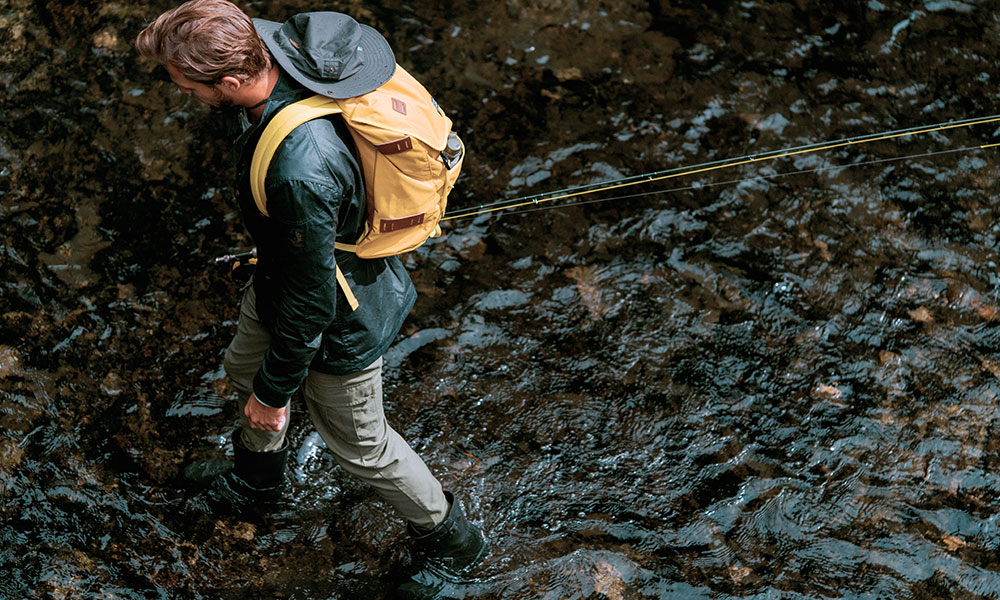Here’s a Basic Guide to Orienteering For All You City Slickers
At some point in life, every man should venture beyond the office walls. Here’s everything you need to know to ensure you make it back in one piece.
How to Find North
It turns out moss doesn’t grow on the north side of trees. Place a stick upright in the ground (the taller the better) so you can see its shadow. Mark the tip of the shadow with a stone or other small object — this will represent west. Wait 15 or 20 minutes for the shadow to move across the ground then mark its new endpoint. Now you have east. Stand between the points so the original mark is on your left. The direction you’re facing is north.
No, That Stream Probably Isn’t Safe to Drink From
If you’re in the wild, there’s no sure way to know if your water source is safe. Even clear water can be contaminated with pathogens responsible for things like E. coli, dysentery, and hepatitis A. Scary stuff.
Always treat water you’re going to ingest. We like to use a filter with a built-in iodine system, though chemical tablets work well too. Boiling is another option, though it’s time-consuming and requires a heat source.

Map Skills Are Life Skills
No matter what direction you’re facing, keep your map oriented north. This will properly mirror your terrain, giving you a better understanding of the land ahead and behind.
Don’t Put Your Map Away
You’ll be surprised at how easy it is to veer off track. Keep your map out with you and use your thumb to track your position as you go. This provides a constant reminder of where you are and where you want to be.
Count Your Paces
Counting your paces — generally speaking, every two steps — is a helpful way to keep track of distanced travelled against the scale of your map. Consider 50 to 55 paces to be roughly 100 metres. We recommend, though, you figure out your own stride rate before setting off.
If an attack point — a landmark or bound- ary that you’re working towards — is, say, 200 metres away, you should expect to reach that within 100-plus paces. If you’ve blasted through your expected paces, there’s a good chance you veered off course and need to turn around. Give your mind a break and reset your count at every new landmark.
Know Your Panic Point
Something is probably going to go wrong while you’re out there — that’s part of what makes orienteering so much fun (and also, sometimes, necessary). Somewhere nearby will be a road or a fence or another man-made landmark that can take you back to civilization. This is called your panic point. Keep that in the back of your mind for when you get sufficiently freaked out.










